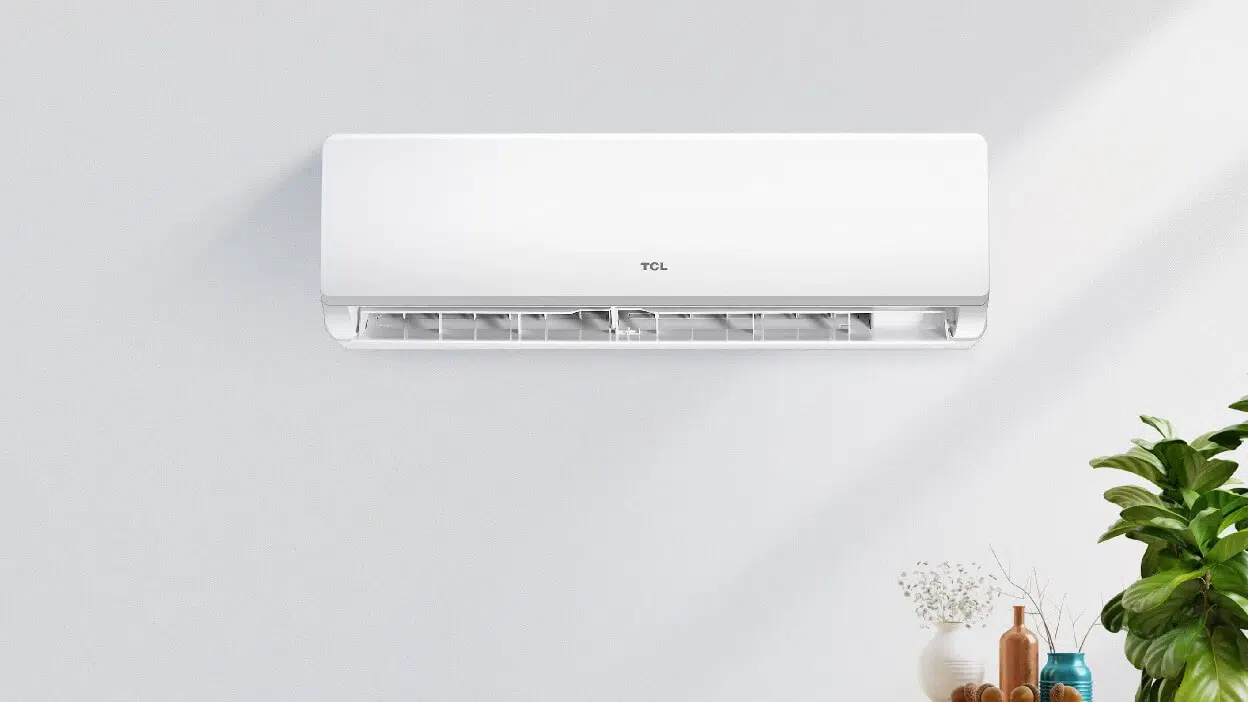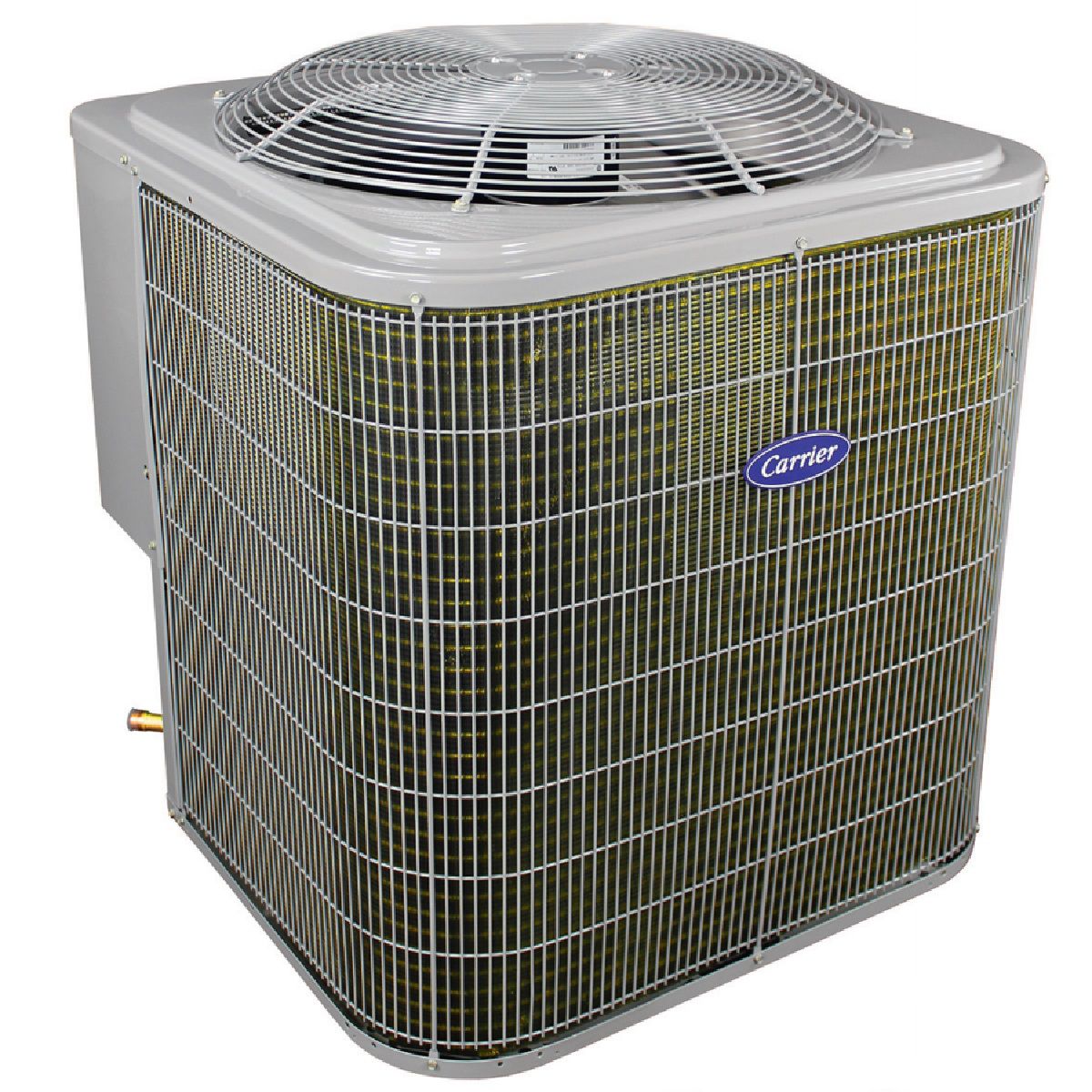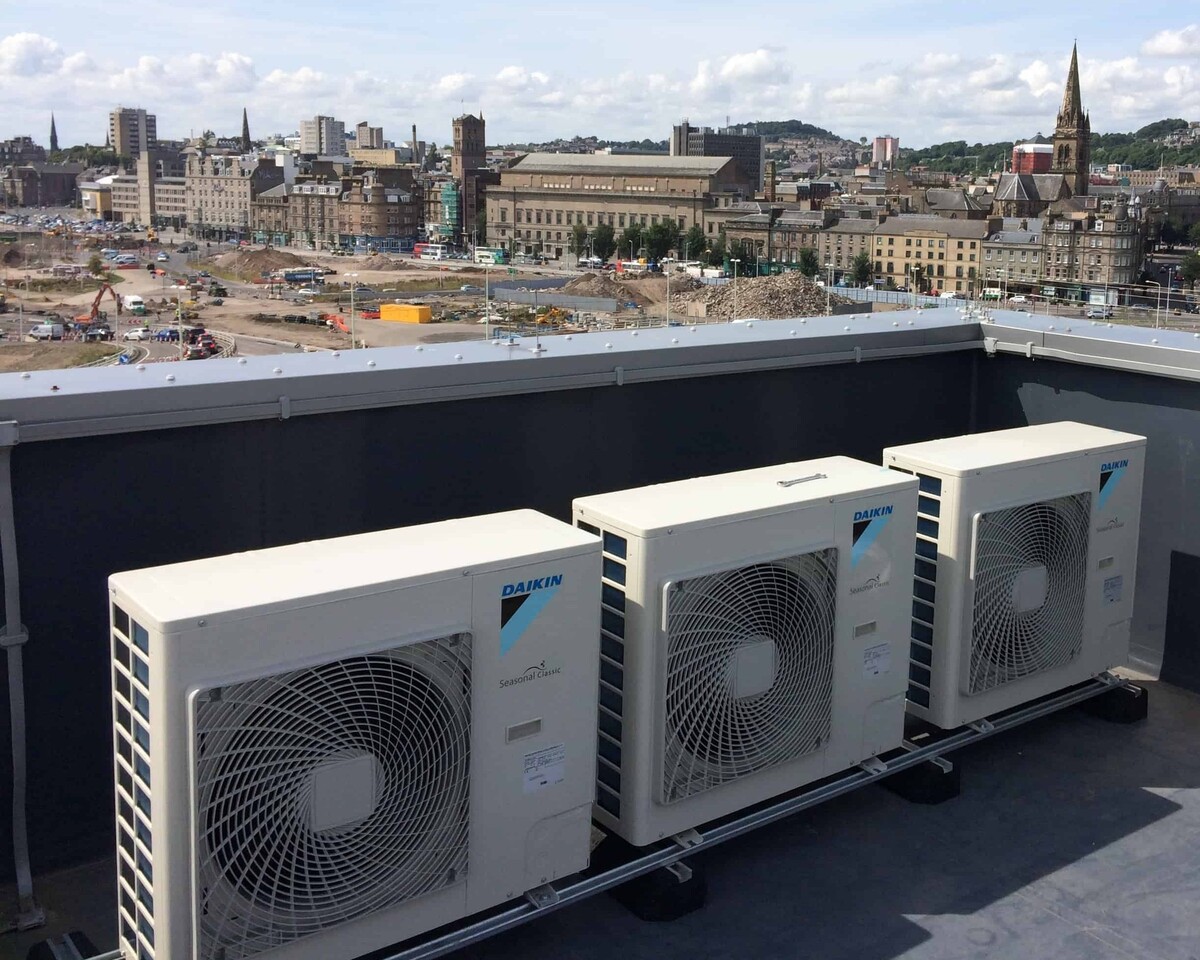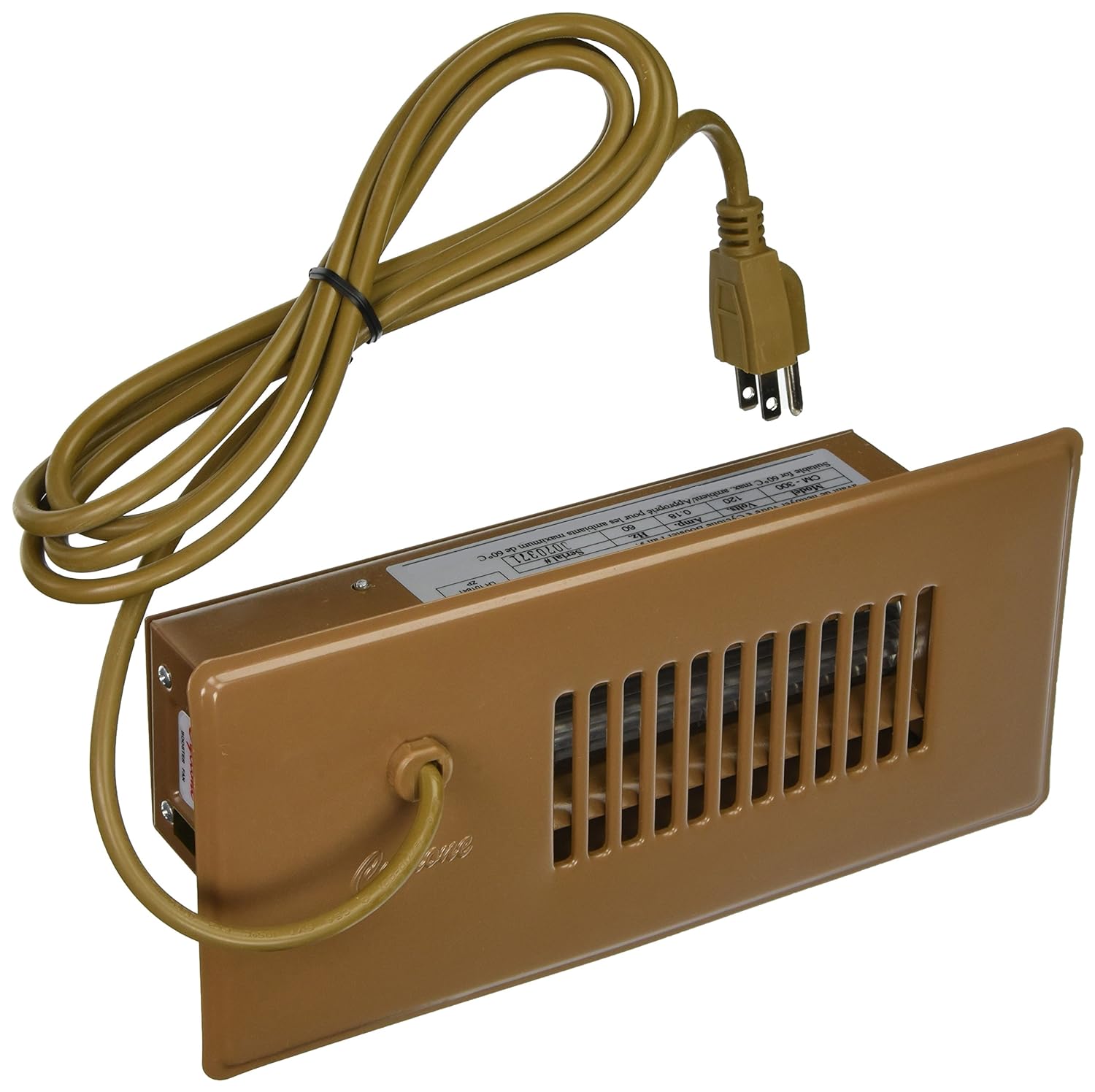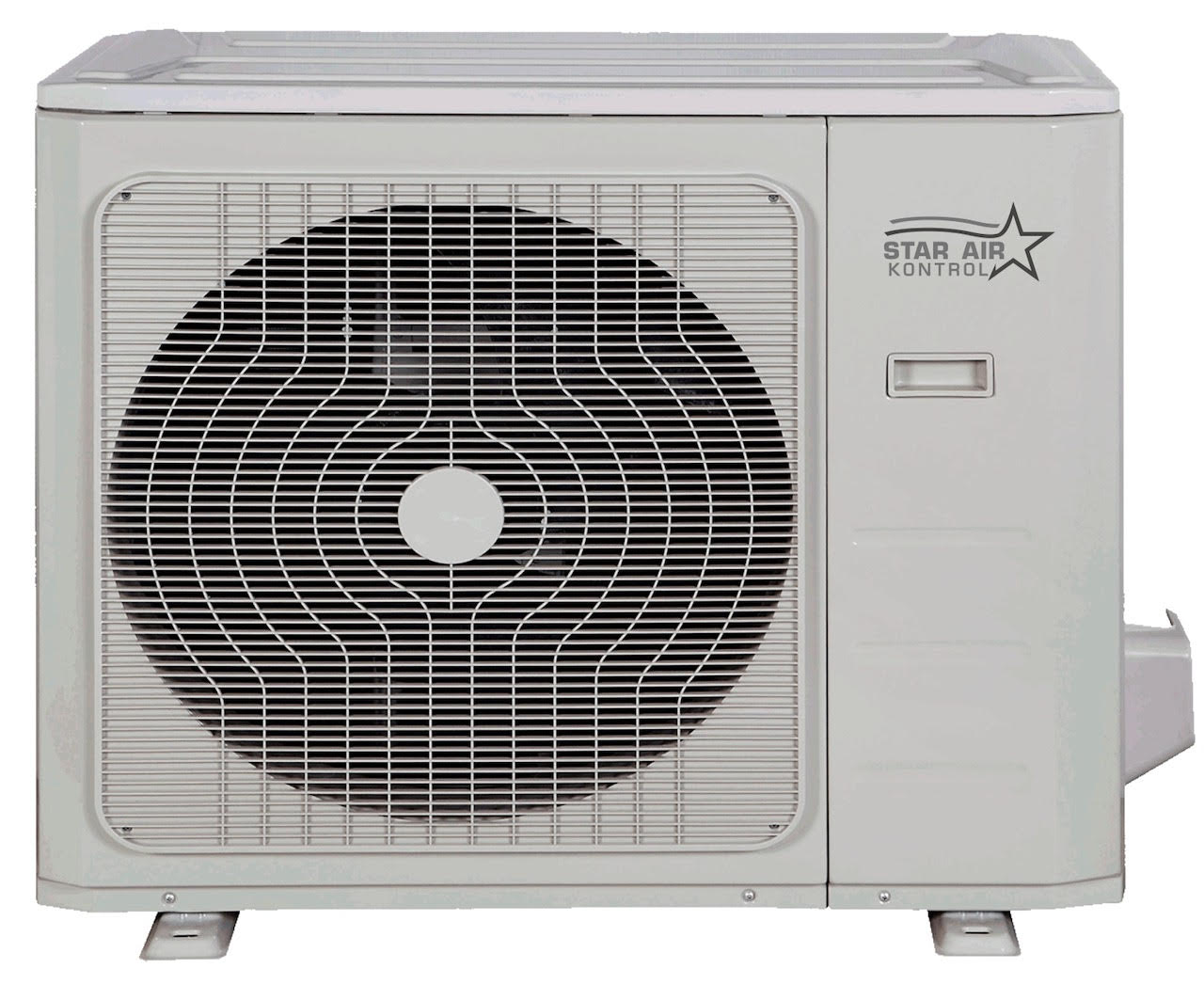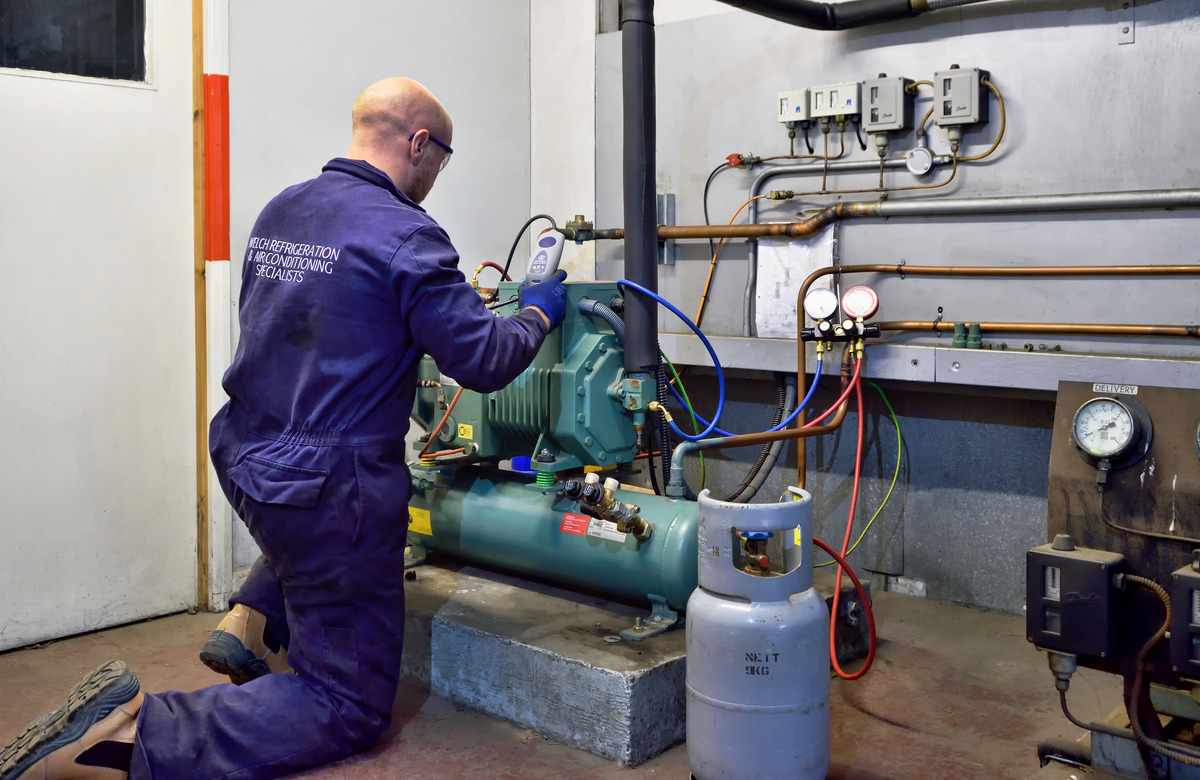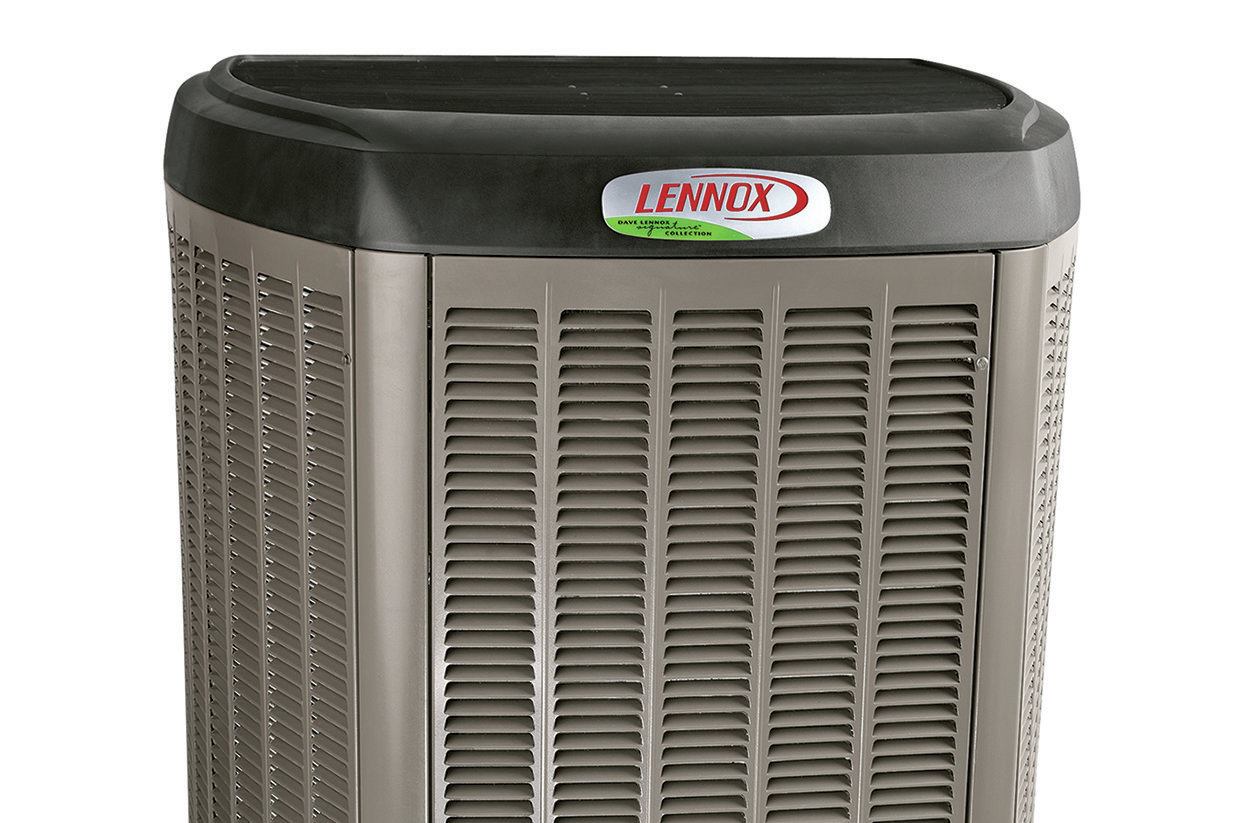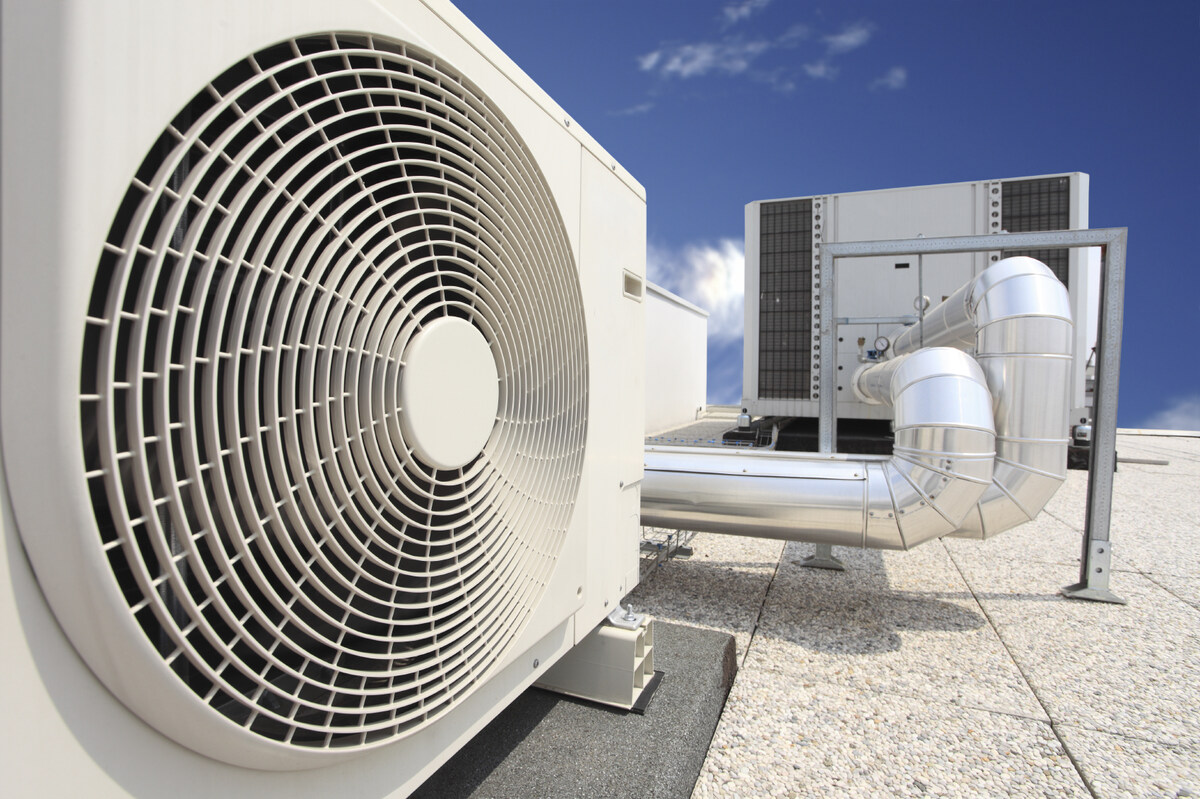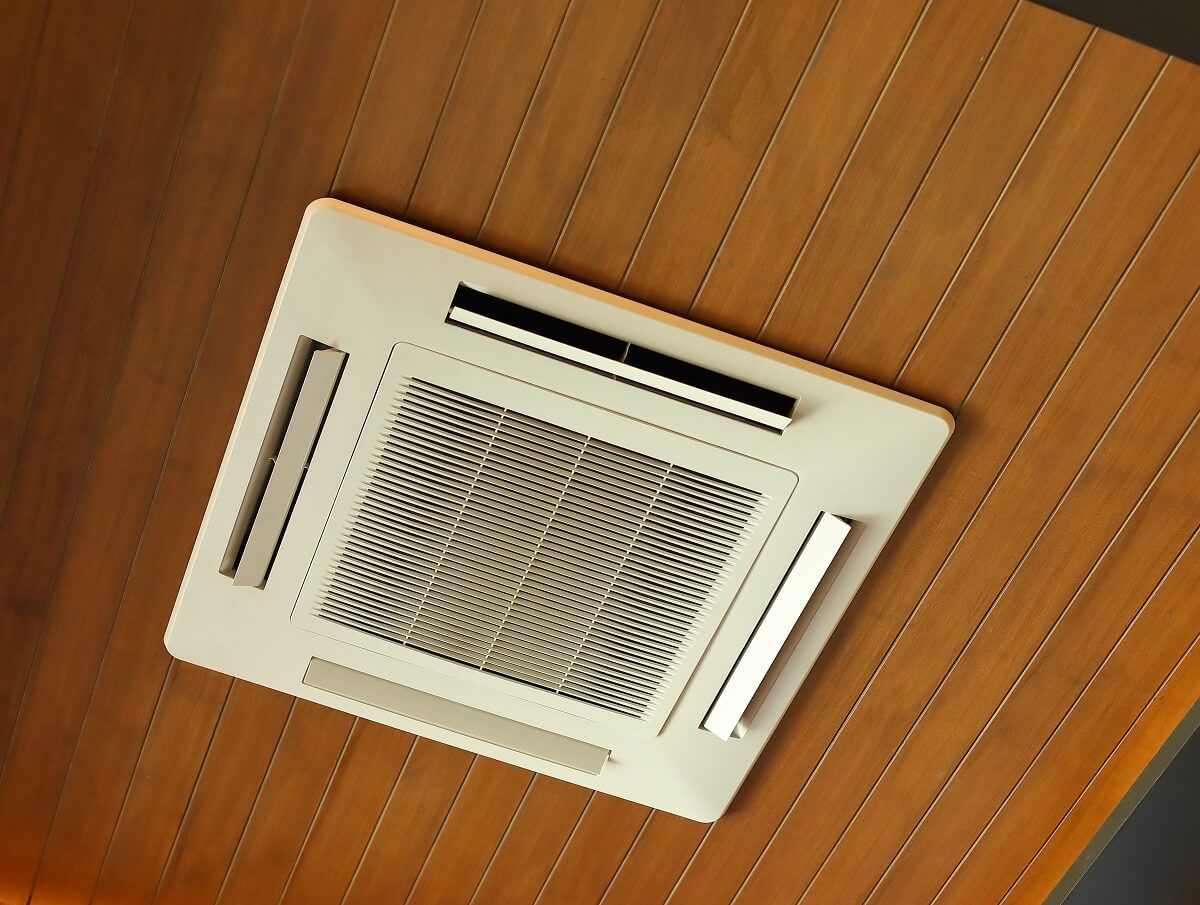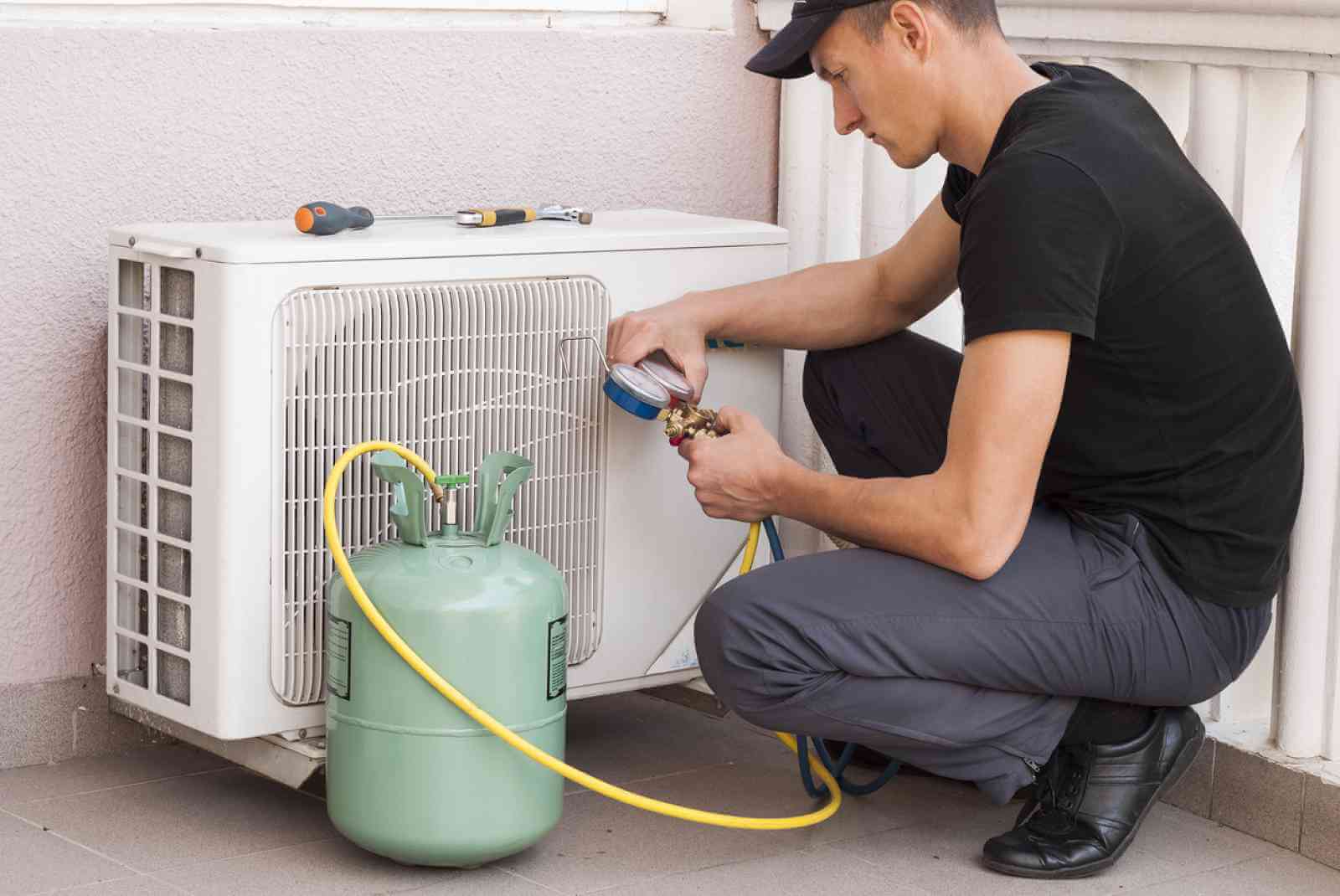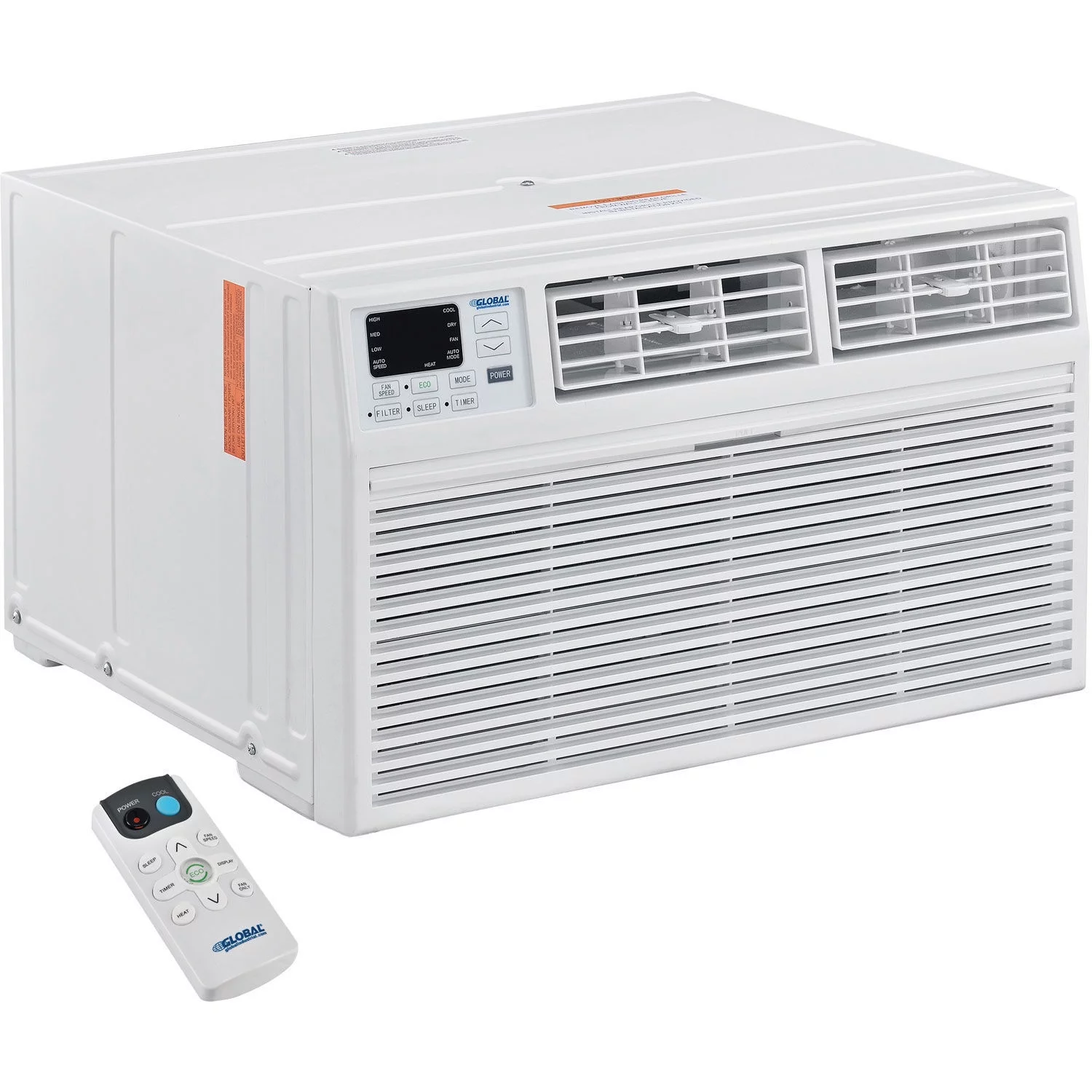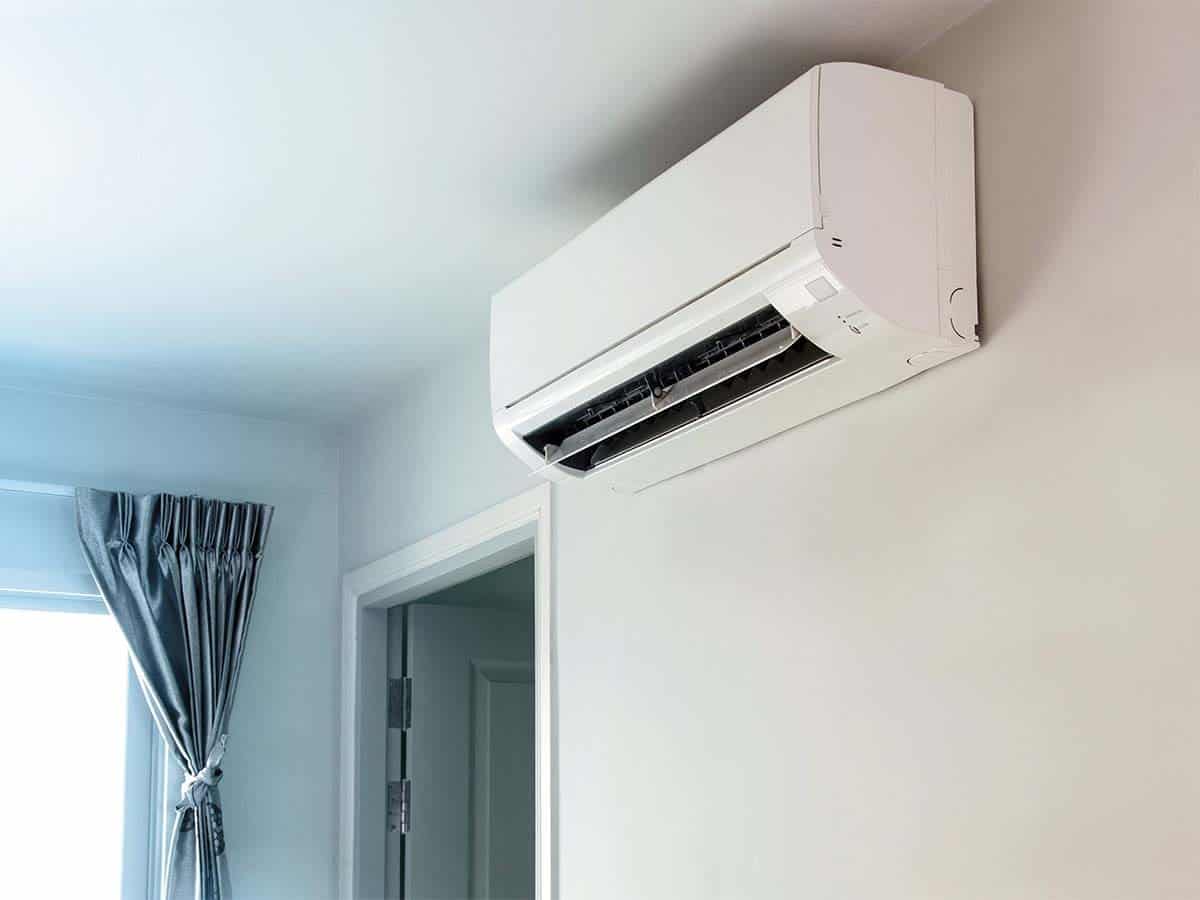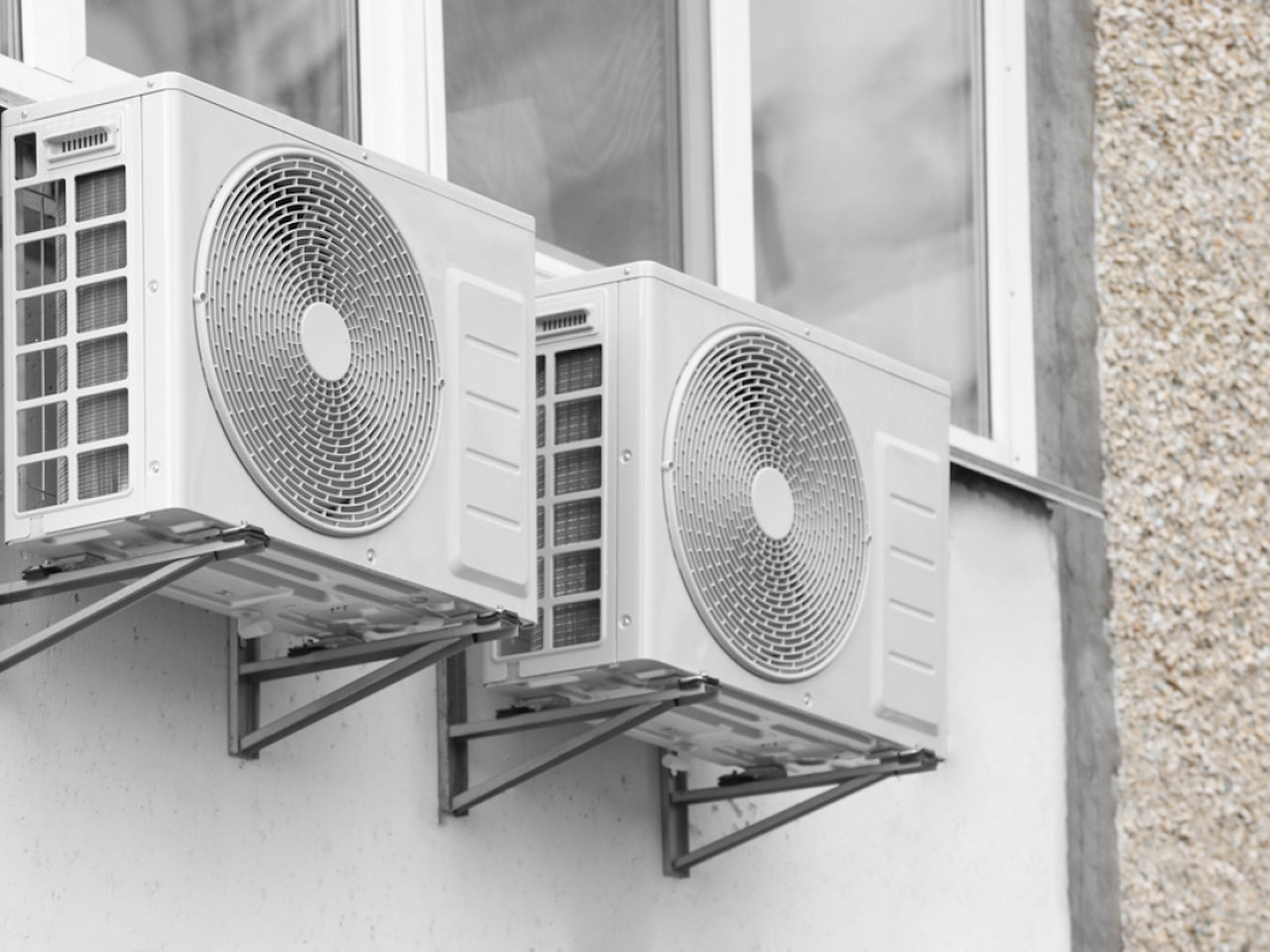Home>Home Maintenance>What Is Split Ductless Air Conditioning
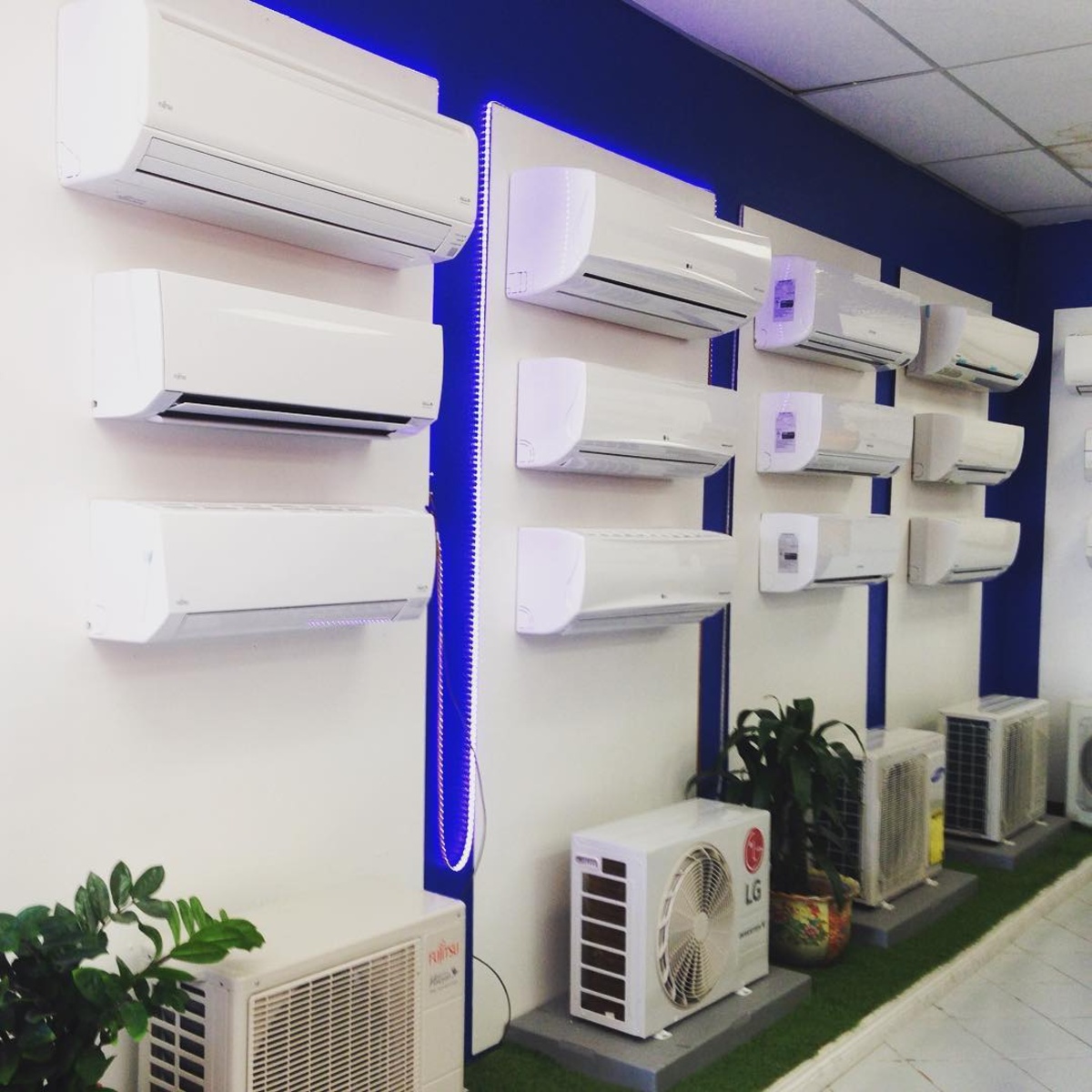

Home Maintenance
What Is Split Ductless Air Conditioning
Modified: March 6, 2024
Learn about split ductless air conditioning systems for your home maintenance needs. Discover how this energy-efficient solution can provide year-round comfort and savings.
(Many of the links in this article redirect to a specific reviewed product. Your purchase of these products through affiliate links helps to generate commission for Storables.com, at no extra cost. Learn more)
Introduction
Welcome to the world of split ductless air conditioning! If you’re looking for an efficient and versatile cooling solution for your home, split ductless air conditioning is definitely worth considering. This innovative system provides a range of benefits that can enhance your comfort and improve energy efficiency.
Unlike traditional central air conditioning systems that rely on ductwork to distribute cool air throughout the house, split ductless air conditioning offers a more flexible and targeted approach. It consists of two main components: an outdoor unit and one or more indoor units. These units are connected by refrigerant lines and require minimal installation effort compared to traditional systems.
But how exactly does split ductless air conditioning work? And what are the advantages of choosing this type of system over other options? In this article, we will explore the ins and outs of split ductless air conditioning, providing a comprehensive guide to help you make an informed decision for your home.
From understanding the components of a split ductless system to learning about the installation process and maintenance requirements, we will cover it all. Additionally, we’ll compare split ductless air conditioning to traditional systems and discuss the cost and energy efficiency considerations.
So, whether you are planning to install a new cooling system or simply want to upgrade your existing one, keep reading to discover the benefits and advantages of split ductless air conditioning.
Key Takeaways:
- Split ductless air conditioning offers personalized comfort and energy efficiency by allowing independent temperature control in different areas of your home, reducing energy waste and lowering utility bills.
- With advanced filtration systems and minimal installation effort, split ductless systems provide cleaner indoor air and a sleek, modern design, making them a versatile and cost-effective cooling solution for homes.
How Split Ductless Air Conditioning Works
Split ductless air conditioning operates on a simple yet effective principle. The system consists of two main components: an outdoor unit, also known as the condenser, and one or more indoor units, often referred to as air handlers. These units are connected by refrigerant lines, which circulate the cooling agent between the outdoor and indoor units.
The outdoor unit plays a vital role in the cooling process. It houses the compressor, which pressurizes and circulates refrigerant throughout the system. The refrigerant absorbs heat from inside your home and transports it to the outdoor unit, where it is released into the air. This continuous cycle ensures that your home remains cool and comfortable.
Inside your home, the indoor units are strategically placed in different rooms or zones to provide individualized cooling. Each air handler contains a fan and an evaporator coil. When the indoor unit is turned on, the fan circulates filtered air from the room, passing it over the evaporator coil. As the warm air comes into contact with the cold coil, the heat is transferred to the refrigerant, causing the air to cool down. The cooled air is then recirculated back into the room, while the heat extracted from the air is transported to the outdoor unit for release.
One of the key advantages of split ductless air conditioning is the ability to independently control each indoor unit. This zoning feature allows you to customize the temperature in different areas of your home, ensuring optimal comfort for everyone. For example, you can set a lower temperature in the living room during the day and a higher temperature in the bedrooms at night, saving energy and reducing utility costs.
Additionally, split ductless systems often come with advanced features such as programmable timers and remote control functionality, allowing you to easily adjust settings and maintain the desired temperature throughout the day. Some models even offer smart home integration for convenient control using your smartphone or voice commands.
Overall, split ductless air conditioning offers a highly efficient and customizable cooling solution for your home. By providing individualized control and targeting specific areas, you can achieve optimal comfort while minimizing energy consumption.
Advantages of Split Ductless Air Conditioning
Split ductless air conditioning provides several advantages that make it a popular choice among homeowners. Let’s explore some of the key benefits:
- Energy Efficiency: One of the main advantages of split ductless air conditioning is its high energy efficiency. Unlike central air conditioning systems that can lose significant energy through ductwork, split ductless systems eliminate this energy loss by delivering cool air directly to each zone. The ability to independently control each indoor unit also allows for more precise temperature management and reduces energy wastage.
- Zoning Flexibility: Split ductless systems offer the unique advantage of zoning. With multiple indoor units, you can divide your home into different zones and control the temperature individually for each zone. This allows for personalized comfort and helps save energy by avoiding cooling unoccupied areas of your home.
- Improved Indoor Air Quality: Split ductless air conditioning systems are equipped with advanced filtration systems that help improve indoor air quality. These filters capture dust, pollen, allergens, and other airborne particles, providing cleaner and healthier air for you and your family to breathe.
- Easy Installation: Installing a split ductless system is relatively quick and simple compared to traditional air conditioning systems that require extensive ductwork installation. The absence of ducts eliminates the need for major renovations, making it an ideal solution for both new construction and retrofitting in older homes.
- Minimal Noise: Split ductless air conditioning units are designed to operate quietly, ensuring a peaceful and comfortable environment in your home. With the noisy compressor located outside, the indoor units generate minimal noise, allowing you to enjoy uninterrupted relaxation or conversation.
- Increased Home Security: Traditional window or wall-mounted air conditioning units can be easy targets for intruders, jeopardizing your home’s security. In contrast, split ductless air conditioning systems require only a small hole to connect the indoor and outdoor units, minimizing any vulnerabilities and enhancing the safety of your home.
- Improved Aesthetics: Unlike bulky window units, split ductless air conditioning systems have a sleek and modern design. The indoor units can be mounted on walls, suspended from ceilings, or even recessed into the ceiling, providing a clean and unobtrusive appearance that seamlessly integrates with your home’s decor.
With these numerous advantages, split ductless air conditioning is an excellent choice for homeowners looking for superior comfort, energy efficiency, and flexibility in their cooling system.
Components of Split Ductless Air Conditioning Systems
A split ductless air conditioning system consists of several key components. Understanding these components can help you make informed decisions when choosing and maintaining your system. Let’s take a closer look at each component:
- Outdoor Unit (Condenser): The outdoor unit, also known as the condenser, is responsible for cooling the refrigerant and expelling heat absorbed from indoor air. It contains the compressor, condenser coil, and a fan to facilitate heat transfer. The outdoor unit is usually installed outside the house, either on the ground or mounted on a wall or rooftop.
- Indoor Units (Air Handlers): The indoor units, or air handlers, are responsible for delivering cool air to specific zones or rooms in your home. They contain a fan, an evaporator coil, and sometimes additional features such as filters or dehumidifiers. The number of indoor units can vary depending on the size of the area being cooled and the desired level of control and comfort.
- Refrigerant Lines: Refrigerant lines connect the outdoor and indoor units, allowing for the circulation of refrigerant. These lines transport the refrigerant that absorbs and releases heat as it moves between the two units. Proper insulation of the refrigerant lines is crucial to maintain the efficiency of the system and prevent energy loss.
- Controls and Thermostats: Split ductless systems come with controls and thermostats that allow you to set and adjust the temperature, fan speed, and other settings for each indoor unit. Some models offer advanced features such as programmable timers or smart thermostats that can be controlled remotely via mobile apps or voice commands.
- Power Supply and Wiring: To provide electricity to the system, a power supply and wiring are necessary. The outdoor unit typically requires a dedicated electrical circuit, while the indoor units are connected to the outdoor unit and powered through the refrigerant lines.
- Drainage System: As the indoor units cool the air, they also remove moisture, resulting in condensation. A drainage system, often consisting of a drain pan and a condensate line, is in place to collect and channel the condensed water away from the indoor unit. Proper drainage prevents water damage and ensures the efficient operation of the system.
- Optional Accessories: Some split ductless systems offer additional accessories to enhance comfort and convenience. These may include remote control units, Wi-Fi connectivity, air purifiers, dehumidifiers, or multi-stage filtration systems. These accessories can be added to further improve air quality and customize the system to your specific needs.
Each of these components plays a crucial role in the overall functioning and efficiency of a split ductless air conditioning system. Regular maintenance and care, including cleaning filters and maintaining proper refrigerant levels, are essential to ensure the longevity and performance of the system.
Installation Process for Split Ductless Air Conditioning
The installation of a split ductless air conditioning system involves several steps to ensure a proper and efficient setup. While it is recommended to hire a professional HVAC technician for the installation, understanding the process can help you make informed decisions and communicate effectively with the installers. Here is a general overview of the installation process:
- Site Assessment: The first step is to conduct a thorough site assessment. An HVAC technician will evaluate your home’s layout, insulation, and electrical system to determine the optimal locations for the outdoor and indoor units. They will also consider factors such as sun exposure, airflow, and potential noise concerns.
- Outdoor Unit Installation: The outdoor unit, or condenser, is typically installed on a stable surface outside the house. It can be placed on the ground or mounted on a wall or rooftop using brackets. The technician will ensure that the unit is level, securely mounted, and has proper clearance from obstacles such as plants or structures.
- Indoor Unit Placement: The indoor units, or air handlers, are mounted inside the house in each designated zone or room. The technician will carefully select the optimal locations to ensure even and efficient cooling. Depending on the type of unit and placement, they may be mounted on walls, suspended from ceilings, or recessed into the ceiling. The units are securely attached and connected to the refrigerant lines and electrical wiring.
- Refrigerant Line Connection: Refrigerant lines are responsible for circulating the refrigerant between the outdoor and indoor units. The technician will carefully fit and connect the lines, ensuring proper insulation to prevent energy loss. They will also check for any leaks and ensure that the refrigerant lines are properly sealed and insulated.
- Electrical Wiring: A dedicated electrical circuit is necessary to supply power to the outdoor unit. The technician will safely wire and connect the outdoor unit to the electrical panel, following local electrical codes and regulations. They will also connect the indoor units to the outdoor unit through the refrigerant lines, ensuring that all connections are tight and secure.
- Drainage System Installation: To prevent moisture buildup and ensure proper drainage, the technician will install the necessary components of the drainage system. This typically includes a drain pan and condensate line connected to each indoor unit. They will ensure that the condensate line is sloped correctly and leads to an appropriate drain outlet.
- Testing and Commissioning: Once the installation is complete, the technician will perform thorough testing and commissioning of the system. This includes checking the refrigerant levels, testing the airflow, and verifying proper operation of each indoor unit. They will also program the controls and thermostats according to your preferences and demonstrate how to operate the system effectively.
- Final Inspection and Cleanup: After testing and commissioning, the technician will perform a final inspection to ensure that the installation meets all safety and quality standards. They will address any last-minute adjustments or concerns and clean up the work area, leaving your home neat and tidy.
It is crucial to have a professional technician handle the installation to ensure proper sizing, placement, and connections of the components. This will ensure optimal performance, energy efficiency, and longevity of your split ductless air conditioning system.
A split ductless air conditioning system consists of an outdoor compressor unit and indoor air-handling units. It’s a great option for cooling individual rooms or areas of your home without the need for ductwork.
Read more: What Is A Split Air Conditioning System
Maintenance and Care for Split Ductless Air Conditioning Systems
Maintaining and caring for your split ductless air conditioning system is essential to ensure its longevity, efficiency, and optimal performance. Regular maintenance tasks can help prevent issues, improve indoor air quality, and extend the lifespan of your system. Here are some important maintenance and care tips to keep in mind:
- Cleaning the Filters: The air filters in the indoor units play a crucial role in capturing dust, dirt, and allergens. Over time, these filters can become dirty and clogged, impacting the system’s efficiency and reducing airflow. It’s important to clean or replace the filters regularly, typically every month or as recommended by the manufacturer, to ensure proper airflow and clean indoor air.
- Cleaning the Outdoor Unit: The outdoor unit, or condenser, can accumulate dirt, debris, leaves, and other obstructions that can affect its performance and efficiency. Regularly check and clean the outdoor unit, removing any debris and ensuring that the airflow is unobstructed. Be sure to turn off the system and follow safety guidelines when cleaning the outdoor unit.
- Inspecting the Refrigerant Lines: Periodically inspect the refrigerant lines for any signs of damage, leaks, or insulation deterioration. Damaged or leaking refrigerant lines can affect the system’s cooling capacity and efficiency. If you notice any issues, it is recommended to contact a professional technician for repair or maintenance.
- Checking the Drainage System: Regularly inspect the condensate drain pan and condensate line to ensure proper drainage. A clogged or blocked drainage system can lead to water leakage, system malfunctions, and potential water damage. Clear any obstructions and make sure the drain line is properly sloped to facilitate water flow.
- Trimming Vegetation: Keep the area surrounding the outdoor unit free from vegetation, shrubs, or obstacles. Maintain a clearance of at least 2 feet around the unit to ensure adequate airflow and prevent debris from entering the system. This will enhance the efficiency and performance of the outdoor unit.
- Scheduling Professional Maintenance: While some maintenance tasks can be done by homeowners, it is recommended to schedule annual professional maintenance for your split ductless air conditioning system. A qualified technician can inspect and optimize the system, check refrigerant levels, clean coils, lubricate moving parts, and address any potential issues before they become major problems.
- Operating the System Properly: To ensure efficient and effective operation, it’s important to use the system properly. Avoid drastic temperature adjustments, as they can strain the system and impact energy efficiency. Additionally, keep doors and windows closed when the system is running to maintain the desired temperature and minimize energy consumption.
- Follow Manufacturer’s Guidelines: Always refer to the manufacturer’s guidelines and recommendations for maintenance and care specific to your split ductless air conditioning system. Each system may have unique requirements, and following the manufacturer’s guidelines will help optimize its performance and ensure warranty compliance.
By following these maintenance and care tips, you can ensure that your split ductless air conditioning system operates optimally, delivers clean and cool air, and lasts for years to come.
When to Consider Split Ductless Air Conditioning
Split ductless air conditioning systems offer several advantages that make them a suitable choice for various situations. Here are some scenarios where you might want to consider installing a split ductless air conditioning system:
- Home Additions or Renovations: If you are adding a new room or renovating an existing one, a split ductless system is a great option. It eliminates the need for ductwork, making installation easier and less invasive. You can easily cool the new space without disrupting the existing ducted system or compromising the aesthetics of your home.
- Homes without Existing Ductwork: If your home does not have ductwork, such as older properties or those with baseboard heating, a split ductless system can provide an efficient cooling solution. It eliminates the need for expensive ductwork installation, making it a cost-effective option for older homes or buildings where extensive renovation work may not be feasible.
- Individual Room Temperature Control: Split ductless air conditioning systems allow for independent temperature control in each room or zone. This is ideal for households with varying cooling needs or preferences. It can ensure personalized comfort, reduce energy waste, and avoid conflicts over temperature settings.
- Allergies or Air Quality Concerns: Split ductless systems are equipped with advanced filtration systems that help improve indoor air quality by capturing dust, pollen, allergens, and other airborne particles. If you or a family member suffers from allergies or if you are concerned about air quality, a split ductless system can provide cleaner and healthier air in your home.
- Energy Efficiency: Split ductless air conditioning systems are known for their energy efficiency. By eliminating ductwork, the system minimizes energy loss, making it more efficient than traditional central air conditioning systems. If energy efficiency is a priority for you, a split ductless system can help reduce your carbon footprint and lower your energy bills.
- Noisy or Inefficient Window Units: If you currently rely on loud window or wall-mounted air conditioning units, upgrading to a split ductless system can provide a quieter and more efficient cooling experience. The indoor units of split ductless systems operate quietly, allowing you to enjoy a peaceful environment without the noise disturbance.
- Improved Home Security: Split ductless systems have a small hole for connecting the indoor and outdoor units, minimizing potential security risks. This is in contrast to window or wall units that can be easily removed, providing an entry point for intruders. Installing a split ductless system enhances the security of your home.
Consider these factors when deciding whether to install a split ductless air conditioning system. Each home has unique requirements and considerations, so it’s important to evaluate your specific needs and consult with a professional HVAC technician to determine if a split ductless system is the right choice for you.
Cost and Energy Efficiency of Split Ductless Air Conditioning
When considering a cooling system for your home, cost and energy efficiency are important factors to consider. Split ductless air conditioning systems offer several benefits in terms of both cost and energy efficiency. Let’s explore these aspects:
Cost:
The cost of a split ductless air conditioning system can vary depending on several factors, including the size of your home, the number of indoor units needed, and the complexity of the installation. While the initial cost of a split ductless system may be higher compared to traditional central air conditioning systems, there are several factors that contribute to long-term cost savings:
- Energy Savings: Split ductless systems are renowned for their energy efficiency. By directly cooling specific zones or rooms, these systems eliminate energy losses associated with ductwork. With the ability to control each indoor unit independently, you can adjust temperatures according to your needs, reducing energy waste and lowering utility bills.
- No Ductwork Installation or Repair Costs: Traditional central air conditioning systems require ductwork installation, which can be expensive, especially in homes without existing ducts. Split ductless systems eliminate the need for ductwork, saving you the costs associated with installation or repair of ducts. This can be particularly beneficial if you have an older home or if ductwork installation is impractical.
- Flexibility and Zoning: Split ductless systems offer flexibility and zoning capabilities, allowing you to cool specific zones or rooms as needed. This capability reduces the need to cool unoccupied spaces, resulting in energy savings and lower costs. Additionally, as your cooling needs change over time, you can easily add or remove indoor units, providing cost-effective scalability.
Energy Efficiency:
Split ductless air conditioning systems are designed with energy efficiency in mind. Here are some ways these systems contribute to energy savings:
- No Energy Loss from Ductwork: Traditional air conditioning systems lose energy through ductwork, as cooled air travels through the system. Split ductless systems eliminate this energy loss by directly delivering cooling to individual zones or rooms.
- Individual Temperature Control: By providing individual temperature control for each indoor unit, split ductless systems allow you to selectively cool areas that are in use, avoiding unnecessary cooling of unoccupied spaces. This targeted approach helps maximize energy efficiency and reduce overall energy consumption.
- Efficient Inverter Technology: Many split ductless systems utilize inverter technology, which enables the compressor to operate at variable speeds. This technology allows the system to adjust its cooling output based on the required load, resulting in better energy efficiency and improved comfort.
- Smart and Programmable Features: Some split ductless systems offer smart and programmable features that allow you to schedule cooling based on your daily routine. This feature ensures that your system operates only when needed, reducing energy waste during periods of absence or when cooler temperatures are unnecessary.
It’s important to note that the cost and energy efficiency of a split ductless system can vary depending on factors such as insulation, climate, and usage patterns. Consulting with a professional HVAC technician can help determine the specific costs and potential energy savings associated with installing a split ductless air conditioning system in your home.
Comparison with Traditional Air Conditioning Systems
When deciding on the right cooling system for your home, it’s helpful to compare split ductless air conditioning systems with traditional air conditioning systems. Here are some key points of comparison between the two:
-
Installation:
Traditional air conditioning systems, such as central air conditioning, require the installation of ductwork throughout the house. This can involve significant time, effort, and cost. In contrast, split ductless systems require minimal installation, as they don’t rely on ducts for air distribution. This makes them more versatile and suitable for homes without existing ductwork, as well as for room-by-room cooling in larger homes. -
Energy Efficiency:
Split ductless air conditioning systems are known for their energy efficiency. By eliminating the energy losses associated with ductwork, these systems can be up to 30% more efficient than traditional systems. Additionally, the ability to individually control each indoor unit in a split ductless system allows for targeted cooling and prevents energy waste in unoccupied areas. -
Zoning and Flexibility:
Split ductless systems offer zoning capabilities, allowing you to cool specific areas or rooms independently. This flexibility allows for personalized comfort and energy savings, as you can adjust temperatures according to the needs of each zone. Traditional systems typically cool the entire house as a whole, offering less flexibility and potentially leading to energy waste in unoccupied rooms. -
Indoor Air Quality:
Split ductless systems are equipped with advanced filtration systems that help improve indoor air quality by capturing dust, pollen, allergens, and other airborne particles. In contrast, traditional systems may rely on standard filters that may not be as effective in removing pollutants from the air. This makes split ductless systems a better option for individuals with allergies or respiratory sensitivities. -
Noise Level:
Split ductless systems tend to operate more quietly than traditional systems. The indoor units of split ductless systems generate minimal noise, while the noisiest component, the compressor, is located outside the house. Traditional systems that use ductwork for air distribution can produce more noise due to the airflow through the ducts. -
Cosmetic Appearance:
Split ductless systems offer a sleek and modern design, with indoor units that can be mounted on walls, suspended from ceilings, or recessed into the ceiling. This provides a clean and unobtrusive appearance that seamlessly integrates with your home’s decor. In contrast, traditional systems may require visible ductwork and may not be as aesthetically pleasing. -
Cost:
The initial cost of a split ductless system may be higher compared to traditional systems because of the need for multiple indoor units and specialized equipment. However, long-term cost savings can be achieved through energy efficiency and the absence of ductwork installation or repair expenses.
Ultimately, the choice between split ductless air conditioning and traditional systems depends on factors such as your home’s layout, cooling needs, budget, and personal preferences. Consulting with a professional HVAC technician can help you determine the most suitable option for your specific situation and maximize your comfort and energy efficiency.
Conclusion
Split ductless air conditioning systems offer a modern and efficient cooling solution for homes. With their versatility, energy efficiency, and customizability, they present several advantages over traditional air conditioning systems. By understanding how split ductless systems work, the components involved, and their installation process, you can make an informed decision about whether they are the right choice for your home.
Split ductless systems eliminate the need for extensive ductwork, making installation easier and less invasive. They allow for individual temperature control in each zone or room, providing personalized comfort and minimizing energy waste. The advanced filtration systems in split ductless systems also contribute to improved indoor air quality, making them ideal for those with allergies or respiratory sensitivities.
In terms of maintenance and care, regular cleaning of filters and outdoor units, inspection of refrigerant lines and drainage systems, and scheduling professional maintenance are keys to ensuring optimal performance and longevity. Following these maintenance practices will help you enjoy the full benefits of your split ductless air conditioning system for years to come.
When comparing split ductless systems with traditional air conditioning systems, it becomes apparent that split ductless systems offer more versatility, energy efficiency, and zoning capabilities. However, it’s important to consider factors such as installation costs, energy savings, and specific needs of your home before making a decision.
In conclusion, split ductless air conditioning systems provide an excellent cooling solution for various scenarios. They offer cost savings, energy efficiency, improved indoor air quality, and flexibility with zoning capabilities. If you’re looking for a comfortable and customizable cooling system that can adapt to your specific needs, a split ductless air conditioning system may be the perfect fit for your home.
Frequently Asked Questions about What Is Split Ductless Air Conditioning
Was this page helpful?
At Storables.com, we guarantee accurate and reliable information. Our content, validated by Expert Board Contributors, is crafted following stringent Editorial Policies. We're committed to providing you with well-researched, expert-backed insights for all your informational needs.
